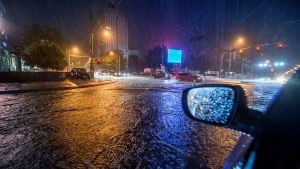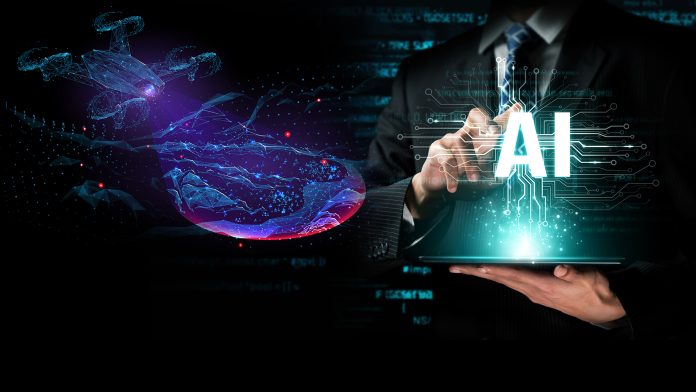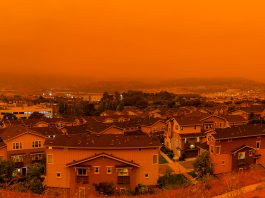RSS-Hydro discusses the powerful potential of leveraging AI, machine learning, and Earth Observation data to mitigate the impacts of increasing climate risks.
According to the European Environment Agency (EEA), climate change is causing more extreme weather events in Europe, such as heat waves, droughts, wildfires, and floods. These events are already harming human health, ecosystems, food security, infrastructure, and the economy. The EEA further argues that Europe is not prepared for these growing risks. The agency, therefore, recommends urgent action to reduce greenhouse gas emissions and improve adaptation policies in order to protect Europe from the impacts of climate change.
Many different types of organisations in various sectors, including RSS-Hydro, are trying to address the many challenges related to the climate crisis by researching and developing solutions that can help governments, public entities, businesses, NGOs, and individuals address some of the challenges and also ensure positive and sustainable impact.
In order to address the many challenges that climate change brings and to be better prepared and become more resilient to the disastrous floods, landslides, wildfires, and hurricanes that are becoming much more impactful and seemingly more frequent, it is important to collect a lot of data from a variety of observing systems using various sensor technologies.
Imagine Earth as a huge, complex system. Earth Observation (EO) data is like having a million eyes in the sky, constantly collecting information about our planet. This data comes from satellites and other instruments that measure things like land cover, temperature, precipitation, and soil moisture.
Now, it is easy to imagine that we would need a very large amount of storage capacity, computing power and really smart algorithms to make sense of this big data and extract useful, actionable information. This is where Artificial Intelligence (AI), particularly Machine Learning (ML), comes in. ML is like having a super-smart brain that can analyse this massive amount of EO data. By looking for patterns and trends, ML can help us understand what is happening on Earth and predict how things might change in the future.
When focusing on disasters, such as floods and fires, putting EO and ML together, the areas that hold a lot of promise in the near future are:
- Early warning systems: By analysing EO data, ML can identify areas that are at high risk of floods or fires based on factors like rainfall, temperature, and vegetation. This allows communities to be warned ahead of time and take steps to prepare or evacuate.
- Better planning: Floodplains and fire-prone areas can be identified using EO data. ML can then analyse this data to help communities plan development projects in a way that minimises flood and fire risk.
- Resource management: EO data can be used to monitor water levels and vegetation health. ML can analyse this data to help us manage water resources more effectively and identify areas where fire prevention efforts are most needed.
Looking closer at flood disasters and flood risk in general, we see that climate change is amplifying flood risks worldwide. To improve our ability to predict and prepare for these events, researchers are exploring advanced techniques like advanced Deep Learning
and Generative AI.
A combination of those approaches can be used to look at:
- Machine Learning for Predictive Analytics: ML algorithms can analyse vast amounts of historical data, including rainfall records, river levels, and land use patterns. This allows them to identify patterns and relationships that can be used to predict the likelihood and severity of future floods.
- Hybrid Approach with Physics-Based Modeling: Combining ML with traditional physics-based flood models can offer even greater accuracy. These models simulate the physical processes that cause floods, such as precipitation and runoff. By incorporating ML’s data-driven insights, these models can become more adaptable to complex real-world scenarios.
- Generative AI for Flood Scenario Building: Generative AI, a powerful branch of AI, can create realistic simulations of flood events. Imagine creating ‘digital twins’ of real-world locations – virtual replicas that can be subjected to various flood scenarios. This allows us to explore how different flood intensities would impact specific areas. This advanced form of scenario building fosters a deeper understanding of flood risks, enabling communities to develop more targeted preparedness plans.
By leveraging these cutting-edge tools, we can move beyond basic flood predictions and toward a future of proactive flood risk management. This will lead to increased resilience and preparedness for a changing climate with heightened flood risks.
Of all these state-of-the-art approaches, Generative AI, also known as GenAI, holds the most promise, especially in the context of building digital twins.
Generative AI: Building digital twins for flood preparedness
Generative AI, offers a revolutionary approach to flood preparedness. It allows us to create ‘digital twins’ – highly realistic simulations of real-world locations. Imagine a virtual replica of your city, complete with buildings, roads, and natural features. This digital twin can then be subjected to various flood scenarios, allowing us to explore the potential impacts of floods with different intensities and durations.

Simulating flood events:
- Virtual flood testing ground: Generative AI can create these digital twins by analysing real-world data like satellite imagery, LiDAR scans (which capture 3D terrain data), and geographical information systems (GIS) data. This allows for the creation of incredibly detailed virtual environments that closely resemble real-world locations.
- Playing out the flood: Once the digital twin is built, we can simulate various flood scenarios. We can adjust factors like:
- Rainfall intensity: Simulate varying levels of precipitation, from moderate rain to extreme downpours, to see how water levels rise and how different areas are affected.
- Flood duration: Explore the impact of short-lived flash floods versus prolonged flooding events to understand potential damage and evacuation needs.
- Visualising the impact: Generative AI can create realistic visualisations of flood simulations. Imagine a video showing how floodwaters would rise and recede, highlighting areas at risk of inundation. This visual representation allows for a much clearer understanding of potential flood impacts compared to traditional text-based reports.
Benefits of scenario building with Generative AI:
- Deeper understanding of flood risk: By simulating various flood scenarios, communities can gain a more comprehensive understanding of their specific vulnerabilities. This allows for a more targeted approach to flood preparedness planning.
- Identifying evacuation routes: Digital twins can be used to identify the most effective evacuation routes under different flood scenarios. This information can be used to develop and optimise evacuation plans, potentially saving lives during a real-world event.
- Prioritising protection measures: By visualising how different areas are impacted by varying flood severities, communities can prioritise flood protection measures. Resources can be allocated more effectively to reinforce levees, protect critical infrastructure, or mitigate potential damage to vulnerable buildings.
- Public awareness and education: Realistic flood simulations created by Generative AI can be used to raise public awareness about flood risks. Educating communities about potential flood impacts can encourage residents to take preparedness actions and improve overall community resilience.
Generative AI offers a powerful tool for proactive flood management. By creating digital twins and simulating various flood scenarios, communities can gain valuable insights and develop more effective flood preparedness plans, ultimately leading to a safer future in the face of increasing flood risks.
A future of proactive flood management
The undeniable reality is that climate change is intensifying flood risks across the globe. However, the future is not one of passive acceptance. The tides are turning towards proactive flood management, empowered by innovative technologies like Earth Observation data and Machine Learning.

By harnessing the power of AI, particularly Generative AI, for building digital twins, communities can move beyond basic flood predictions. These virtual replicas can allow for the simulation of diverse flood scenarios, fostering a deeper understanding of vulnerabilities and potential impacts. This knowledge is the cornerstone for targeted preparedness plans, including identifying evacuation routes, prioritising protection measures, and raising public awareness.
The fight against climate change’s devastating effects requires a multi-pronged approach. While mitigating emissions remains crucial, advancements like Generative AI offer a promising approach in the face of heightened flood risks. By embracing these
cutting-edge tools, we can build a future of resilience, one where communities are empowered to face the challenges of a changing climate with more confidence and preparedness.
In conclusion, it is essential to commend the ongoing efforts of organisations like RSS-Hydro, who exemplify the dedication of countless entities working towards climate solutions. However, effectively mitigating flood risk necessitates a global approach. International collaboration is paramount to ensure the widespread and successful implementation of these innovative technologies.
Moving forward, collective action is crucial. Individuals can empower themselves by learning more about flood risks in their localities, advocating for proactive flood management policies at all levels, and actively participating in preparedness efforts within their communities. Through collaborative efforts, we can harness the transformative potential of Generative AI and other cutting-edge tools to build a future characterised by resilience in the face of climate change’s escalating threats.









